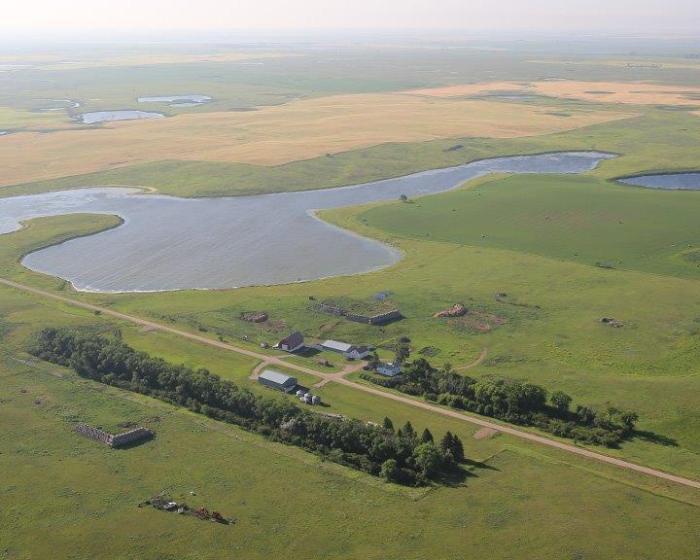Veteran Finds Solace in Farming and Conservation in Sheridan County
After one combat deployment to Afghanistan and an extended tour to Iraq with the U.S. Army, John Halcrow says, “I told myself if I made it home, I wanted to find a quiet place to be at peace…Whoever said war is hell was being optimistic. It’s worse than that.”
Kindra Gordon writes from Whitewood, S.D.
Halcrow found that solace by purchasing a farm in North Dakota and has worked with the Natural Resources Conservation Service (NRCS) McClusky Field Office to add several conservation practices to enhance the land.

While Halcrow grew up in Los Angeles, his wife Karyn grew up on a ranch at Kenmare, N.D., and in 2010 their farming journey began by purchasing a quarter of land in Sheridan County, an hour north of Bismarck, N.D. She owned a few cows from her years in 4-H and that began their herd.
Today, they’ve purchased more land as well as rent from several landowners. They run 180 commercial cows and raise small grains including flax, wheat, canola along with hay and barley for feed. The couple is also raising their two-year-old daughter Ruby on the farm, and Halcrow works full-time as a firefighter in Bismarck.
Working with NRCS, Halcrow’s status as a beginning farmer/rancher and military veteran farmer/rancher allowed him to qualify for the Environmental Quality Incentives Program (EQIP), which provided technical and cost share assistance to implement conservation improvement practices on their rangeland, hayland and cropland.
One of the first practices they invested in was a well to bring reliable, fresh water to the cattle. “That was a huge improvement,” he says. Pipelines and water tanks were added to supply water to pastures across the ranch.
Cross-fencing over 1,000 acres into 40 and 80 acre cells followed. “That also was excellent,” says Halcrow, who adds, “We saw a big change. There was just more grass, and if we got rain after you’d grazed a cell you could eventually go back and graze it a second time.” He worked with the NRCS staff to develop a rotational grazing plan.
On their cropland and hayland, Halcrow has seeded some cropland back to grass, has utilized forage analysis to enhance hay management methods, and has deferred some haying to benefit wildlife. The Halcrow’s also use soil testing and converted from conventional tillage to minimal till and intend to move to no-till next. The couple is also exploring the addition of cover crops to the crop land in the near future to benefit soil health, while also providing aftermath grazing.
Working with the Sheridan County Soil Conservation District, John and Karyn have also planted hundreds of trees. “We love trees. And what is amazing to me is that we have metal windbreaks, and I even stack flax straw bales three high to provide wind protection, but if you stand by the windbreak, even with no leaves, those trees cut the wind the best,” he says.
Of his unique story from Los Angeles to the military to a farm in North Dakota, Halcrow says, “We enjoy agriculture. We see ourselves as stewards of God’s creation. We don’t really own anything; I’m just one steward in a long line of stewards on the land. I feel it is my responsibility to take care of the land.”
That said, Halcrow credits the team of people who have helped him along the way. “It’s about all the people pulling for you. There are landowners who we rent from; the staff at the NRCS and Farm Service Agency. I have a tremendous wife. She bales the hay and runs the calving barn. She is amazing…Everyone’s heart is in the best interest of the land.”
Shawn Koltes, District Conservationist with the NRCS McClusky Field Office, has worked with Halcrow. “I am delighted to see fellow veterans like John who have returned from military service to successfully establish himself in the farming/ranching community and then to see him immediately set to work on improving his operation by utilizing NRCS programs to improve the productivity and health of his cropland and rangeland,” he says.
Halcrow says he hopes more veterans find their way into farming and working with the beginning farmer and veteran programs offered through NRCS. “I know they would do well at farming,” he says.

